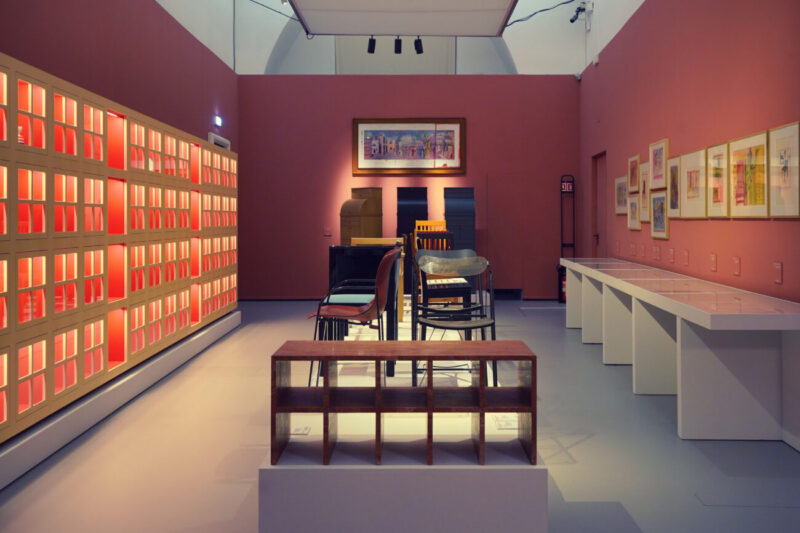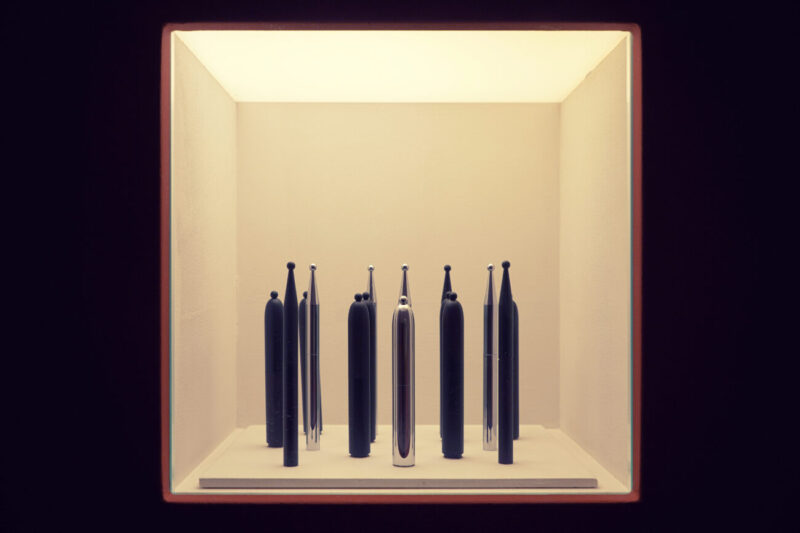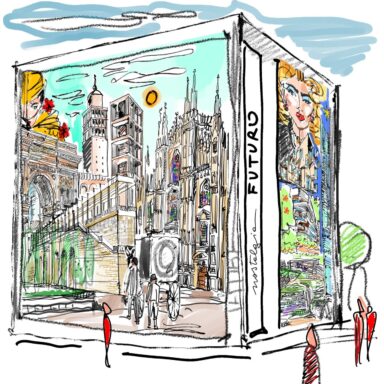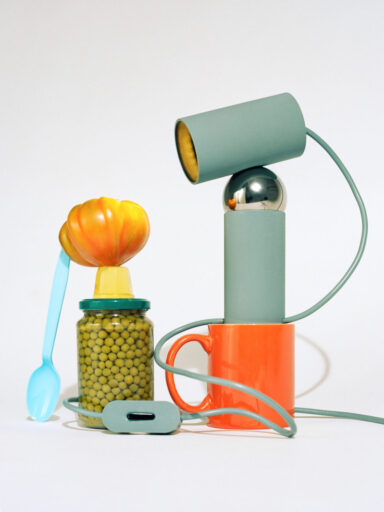Aldo Rossi’s metaphysical projects on shown in Milan until the 6th of November
The extended until November 6, 2022, the exhibition Aldo Rossi. Design 1960-1997 lets the public rediscover one of the masters of postmodern architecture and design. Curated by Chiara Spangaro, the exhibition features more than 350 pieces of furniture and everydays objects , prototypes and models, paintings, drawings and sketches designed and created by Aldo Rossi from 1960 to 1997: a visual witness of his activity as a designer, planner and architectural theorist.
The temporary exhibition at the Museo del Novecento testifies Rossi’s reflections on the relationship between the architectural and urban scale and the monumental and object scale, with the following integration of conceptual speculations with industrial production. Each of the nine rooms through which Aldo Rossi’s visual universe is represented shows a world where the relationship between graphic works and craft and industrial products emerges, with references to architecture and private space. The first room explains the relationship between the painted image and object reality, the second is devoted to prototypes and variants of an imaginary domestic landscape and leads to the reconstruction of a poetic environment in the third room, where works such as the Parigi series and the Tea & Coffee Piazza service are the visual and metaphysical center. The fourth room presents the variety of object production in relation to the shape of the cube that evokes the San Cataldo Cemetery in Modena and introduces the Apollonian geometric figures used by the architect in both design and architecture, the theme of the fifth room: from prototypes for Richard-Ginori and Rosenthal, to the architectural plans for the Monument to the Partisans in Segrate and the school in Fagnano Olona, to the carpets made with ARP Studio in Sardinia or the wooden inlays of Bruno Longoni Atelier d’arredamento. In the sixth room are set up chairs, armchairs, large pieces of furniture and their their variations in material and color, from the Papyro desk to the Tabularium coffee table. The reconstruction of the domestic interior in room seven brings together Rossi’s furniture and objects with others he collected and found in his homes. The relationship with architecture, timely throughout the exhibition, is clear and the furnitures designed by Rossi for some of his buildings exemplify it. The seat for the Carlo Felice Theater in Genoa or the Museo chair built for the Bonnefanten Museum in Maastricht are on shown in the eight room.
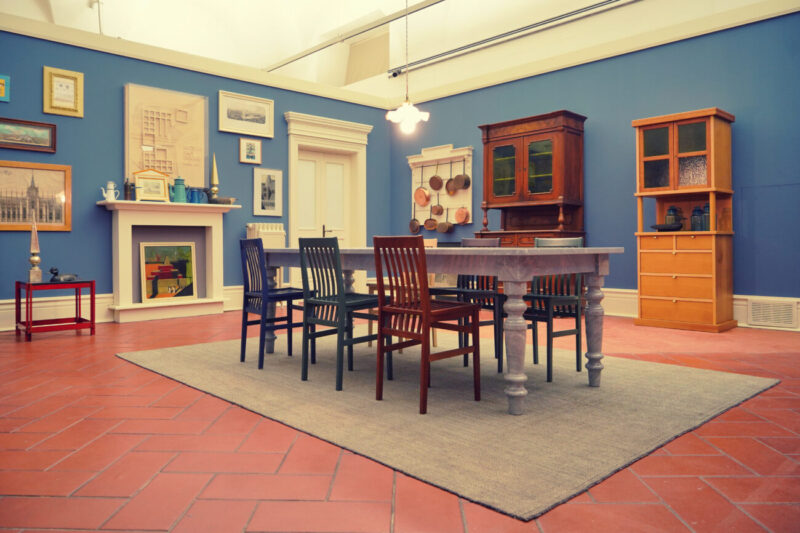
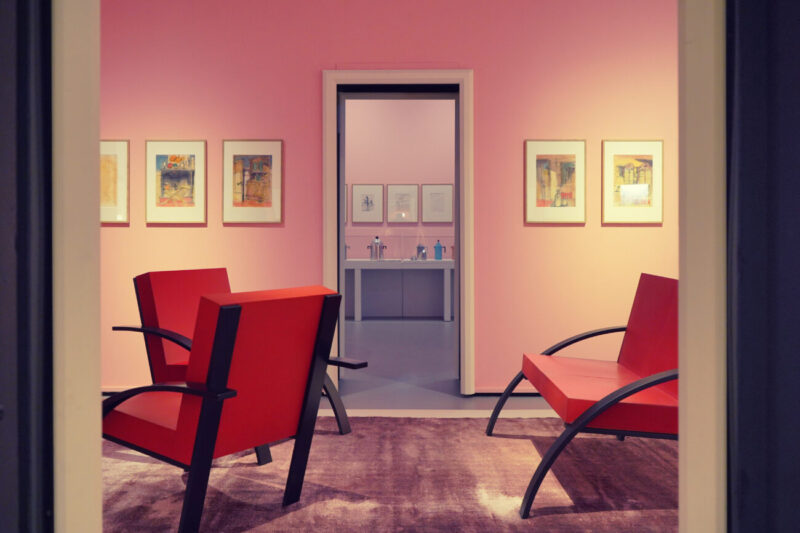
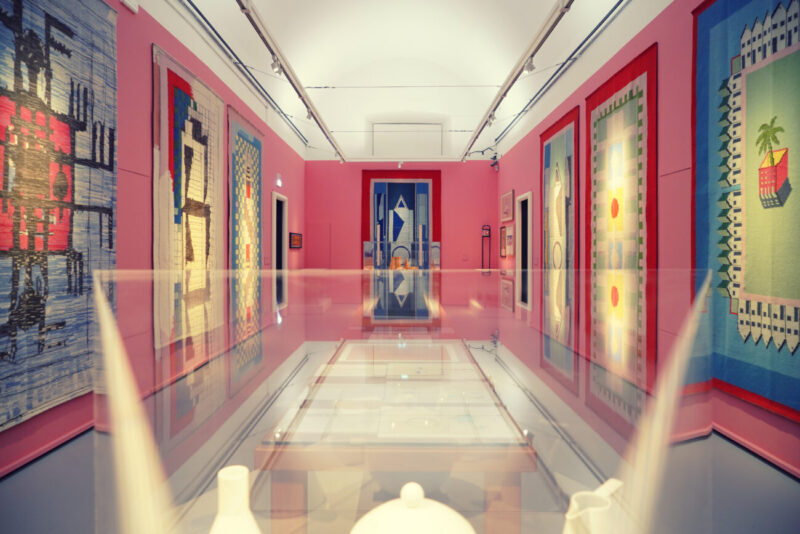
The exhibition closes with the metaphysical presence of the Teatro del Mondo, built by Rossi in Venice for the 1979 Venice Biennale. Used in 1980 by the Theater Sector for the first edition of the Venice Carnival, it was then transported by sea in the summer of that year to the Dubrovnik Theater Festival.
Commenting on his own project in 1979, Rossi said, “I don’t know if and how this Venetian theater or little theater will be built but it will grow in my and other designs because it has like a character of necessity; its limited capacity allows the possibility of direct performances, of various types and above all with a central place in the city. Its structure could only be made of wood and certainly not only because of the time of construction, that wood is a very solid and strong material over time. But because it is related to the architecture of this theater not in a functionalist sense (also, and certainly) but because it expresses this architecture; the wooden boats, the black wood of the gondolas, the maritime constructions.” The Theatre of the World still remains in the collective imagination as a magical, almost mythological building, relating to the tradition of sixteenth-century theaters, to wooden lagoon lighthouses and “casoni,” and to other ephemeral, marine architecture-from the lighthouses of Galicia and Portugal, to the small beach houses of Maine. In addition to the large model of the theater and the photographic documentation of the time made by Antonio Martinelli, the painting Untitled (1980) exhibited here reproduces Rossi’s best-known projects, such as the Monte Amiata building, the Gallaratese neighborhood in Milan, the San Cataldo cemetery in Modena, and the Venetian theater. With them, a smokestack and a tower, the more intimate dimension of the house and the minute dimension of the cabins, show how this his drawing the world by analogies and topoi is the way the architect used in designing architecture and objects, from the block, to the monument to the object of affection.
